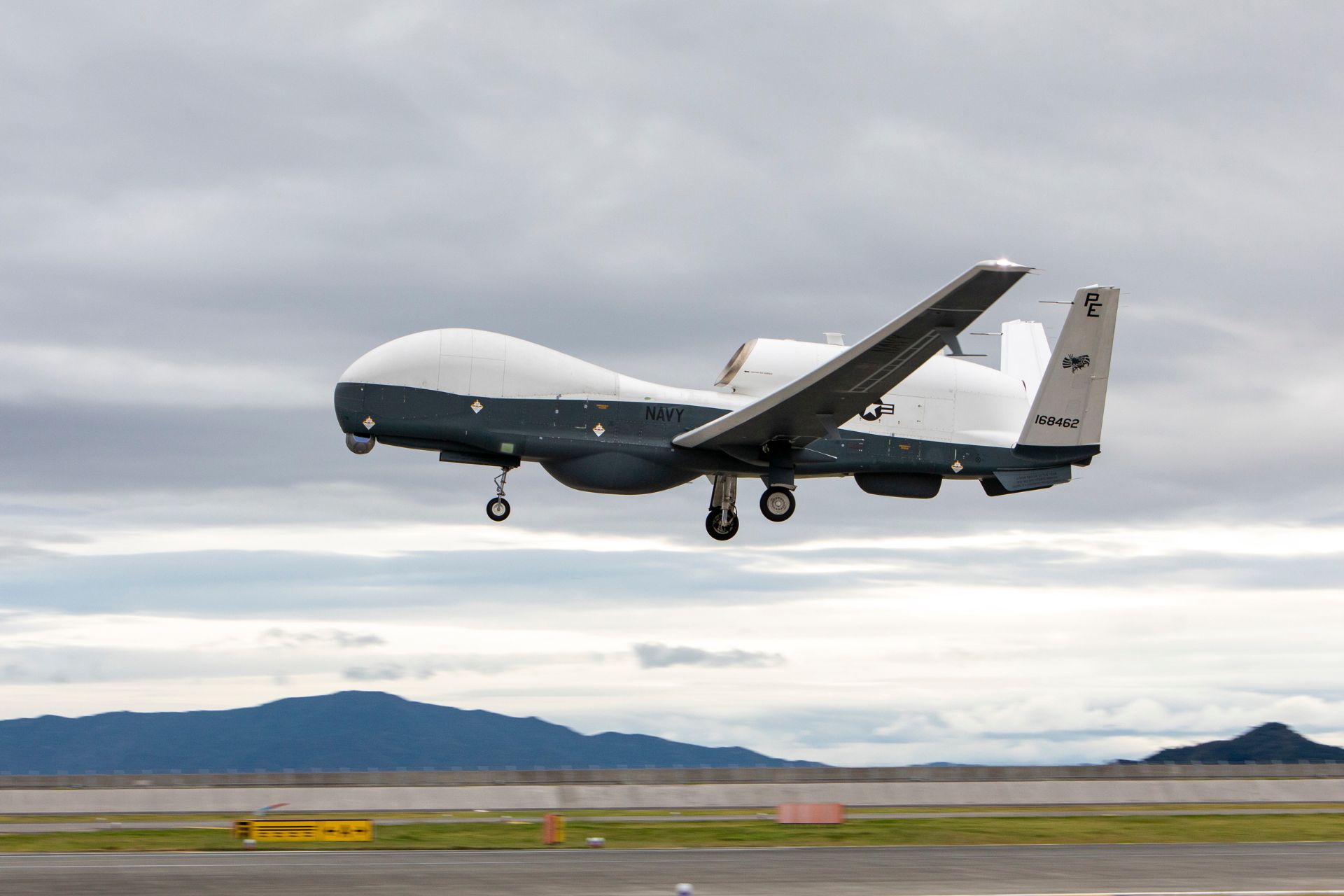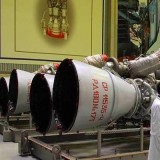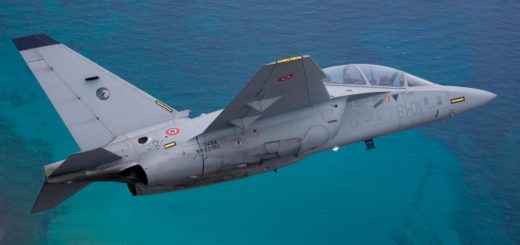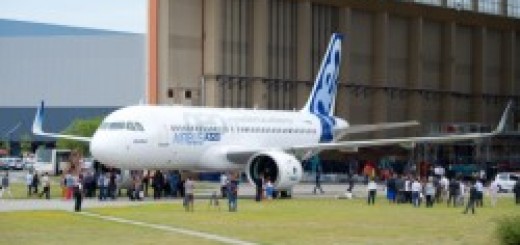US to Deploy MQ-4C Triton Drones to Okinawa to Enhance Intelligence and Surveillance Near Taiwan

{loadposition bannertop}
{loadposition sidebarpub}
The United States plans to strengthen its surveillance capabilities in the Asia-Pacific region by deploying long-range reconnaissance drones to Japan’s Okinawa Island, located near Taiwan. This decision, announced on Tuesday, April 8, 2025, by Japanese Defense Minister Gen Nakatani, comes amid a deteriorating regional security environment marked by increased Chinese military activity around the self-governed island of Taiwan and in Japan’s southern maritime areas. The deployment of the U.S. Navy’s MQ-4C Triton drones aims to enhance the intelligence-gathering capacity of the U.S.-Japan alliance and signals heightened vigilance in response to Beijing’s expanding military posture.
Follow Army Recognition on Google News at this link
The MQ-4C drone can operate above 56,000 feet for up to 28 hours and has a range exceeding 8,000 nautical miles. (Picture source: US DoD)
Manufactured by Northrop Grumman, the MQ-4C Triton is a high-altitude, long-endurance (HALE) unmanned aerial system capable of flying above 50,000 feet for over 24 hours, with an operational range of 7,400 nautical miles, or approximately 13,700 kilometers. According to Nakatani, several Triton drones are expected to arrive at the U.S. Kadena Air Base on Okinawa’s main island in the coming weeks. The base hosts a significant portion of the 54,000 U.S. military personnel stationed across Japan. The minister emphasized that this deployment would be open-ended, citing the continued deterioration of the security situation in the region.
The MQ-4C Triton was developed for the U.S. Navy and the Royal Australian Air Force as part of the Broad Area Maritime Surveillance (BAMS) program. It is designed to provide persistent ISR (intelligence, surveillance, and reconnaissance) coverage over vast maritime areas. The drone can operate above 56,000 feet for up to 28 hours and has a range exceeding 8,000 nautical miles. Its airframe is made of lightweight composite materials and a semi-monocoque aluminum fuselage. Remotely piloted from a ground station, it is also designed to operate in coordination with manned aircraft, allowing them to be reassigned to other missions.
Equipped with an advanced suite of sensors, the Triton includes the AESA MFAS (Multi-Function Active Sensor) radar for long-range maritime and air-to-ground target detection and classification, as well as the MTS-B multispectral targeting system, providing electro-optical/infrared capabilities, automatic target tracking, and high-resolution live video. It is also fitted with the AN/ZLQ-1 electronic support system for specific emitter identification and an Automatic Identification System (AIS) receiver for monitoring maritime traffic. Powered by an Allison Rolls-Royce AE3007H turbofan engine producing 7,050 pounds of thrust, the MQ-4C includes a “due regard” radar for collision avoidance, anti-icing and bird-strike protection, lightning resistance, and an open-architecture software framework to support interoperability. The drone is unarmed and exclusively used for strategic intelligence missions.
This deployment follows a previous temporary stationing of two MQ-4C Tritons at Kadena from May to October 2024. At that time, the U.S. Air Force highlighted Kadena’s strategic location for ISR operations across the Indo-Pacific, including key areas such as the Taiwan Strait, the East China Sea, and Japan’s southwestern islands. The return of the Triton to Okinawa signals a renewed U.S. commitment to regional surveillance amid increasing Chinese aerial activities.
According to data released by Gen Nakatani, the Japanese Air Self-Defense Force conducted 30 drone interceptions in Japan’s southern waters during the 2024 fiscal year, a sharp increase compared to nine in 2023 and four in 2021. Many of these drones, primarily of Chinese origin, have been detected near territories such as Yonaguni Island—located just over 100 kilometers from Taiwan—and off the coast of Amami Ōshima in Kagoshima Prefecture. Nakatani also indicated that both the frequency and the geographical spread of these intrusions had significantly expanded.
In parallel with the increased American presence, Japan is pursuing its own military modernization program, including the acquisition of smaller armed drones as part of a broader upgrade of its national defense capabilities. These new systems are intended to complement Japan’s existing high-altitude ISR platforms in response to the growing diversity of regional threats.
The deployment also aligns with a broader U.S. strategy aimed at encouraging its Asian allies to enhance their defense postures amid concerns over China and North Korea. While continuing to press NATO members to increase their military spending, U.S. President Donald Trump has also urged Indo-Pacific partners, including Japan, to strengthen their autonomous defense capabilities. This approach reflects a wider objective of countering Chinese military ambitions through a network of strengthened regional partnerships.
During a visit to Tokyo on the same day, NATO Secretary General Mark Rutte described China’s military expansion as “staggering” and called on the international community not to underestimate Beijing’s defense investments and industrial capacity. He also voiced NATO’s growing concern about strategic cooperation between China and Russia, as highlighted in Japan’s 2025 Diplomatic Bluebook released Tuesday. The report additionally expressed alarm over the expanding military ties between Moscow and Pyongyang, while reaffirming Japan’s aim to solidify its defense relationship with the United States.
The decision to redeploy the MQ-4C Triton to Okinawa fits within a regional containment framework supported by joint exercises such as “Keen Edge,” held last year by U.S. and Japanese forces. That exercise, for the first time, simulated a joint response to a potential Chinese military operation targeting Taiwan. Such preparations underscore both countries’ efforts to anticipate crisis scenarios in the Taiwan Strait and enhance their collective deterrence posture.
The U.S. deployment of MQ-4C Triton drones to Okinawa responds to a sharp increase in regional aerial threats, particularly from China, near Japan and Taiwan. This strategic move strengthens the ISR capabilities of the U.S.-Japan alliance in a contested area where the military balance is shifting rapidly.

{loadposition bannertop}
{loadposition sidebarpub}
The United States plans to strengthen its surveillance capabilities in the Asia-Pacific region by deploying long-range reconnaissance drones to Japan’s Okinawa Island, located near Taiwan. This decision, announced on Tuesday, April 8, 2025, by Japanese Defense Minister Gen Nakatani, comes amid a deteriorating regional security environment marked by increased Chinese military activity around the self-governed island of Taiwan and in Japan’s southern maritime areas. The deployment of the U.S. Navy’s MQ-4C Triton drones aims to enhance the intelligence-gathering capacity of the U.S.-Japan alliance and signals heightened vigilance in response to Beijing’s expanding military posture.
The MQ-4C drone can operate above 56,000 feet for up to 28 hours and has a range exceeding 8,000 nautical miles. (Picture source: US DoD)
Manufactured by Northrop Grumman, the MQ-4C Triton is a high-altitude, long-endurance (HALE) unmanned aerial system capable of flying above 50,000 feet for over 24 hours, with an operational range of 7,400 nautical miles, or approximately 13,700 kilometers. According to Nakatani, several Triton drones are expected to arrive at the U.S. Kadena Air Base on Okinawa’s main island in the coming weeks. The base hosts a significant portion of the 54,000 U.S. military personnel stationed across Japan. The minister emphasized that this deployment would be open-ended, citing the continued deterioration of the security situation in the region.
The MQ-4C Triton was developed for the U.S. Navy and the Royal Australian Air Force as part of the Broad Area Maritime Surveillance (BAMS) program. It is designed to provide persistent ISR (intelligence, surveillance, and reconnaissance) coverage over vast maritime areas. The drone can operate above 56,000 feet for up to 28 hours and has a range exceeding 8,000 nautical miles. Its airframe is made of lightweight composite materials and a semi-monocoque aluminum fuselage. Remotely piloted from a ground station, it is also designed to operate in coordination with manned aircraft, allowing them to be reassigned to other missions.
Equipped with an advanced suite of sensors, the Triton includes the AESA MFAS (Multi-Function Active Sensor) radar for long-range maritime and air-to-ground target detection and classification, as well as the MTS-B multispectral targeting system, providing electro-optical/infrared capabilities, automatic target tracking, and high-resolution live video. It is also fitted with the AN/ZLQ-1 electronic support system for specific emitter identification and an Automatic Identification System (AIS) receiver for monitoring maritime traffic. Powered by an Allison Rolls-Royce AE3007H turbofan engine producing 7,050 pounds of thrust, the MQ-4C includes a “due regard” radar for collision avoidance, anti-icing and bird-strike protection, lightning resistance, and an open-architecture software framework to support interoperability. The drone is unarmed and exclusively used for strategic intelligence missions.
This deployment follows a previous temporary stationing of two MQ-4C Tritons at Kadena from May to October 2024. At that time, the U.S. Air Force highlighted Kadena’s strategic location for ISR operations across the Indo-Pacific, including key areas such as the Taiwan Strait, the East China Sea, and Japan’s southwestern islands. The return of the Triton to Okinawa signals a renewed U.S. commitment to regional surveillance amid increasing Chinese aerial activities.
According to data released by Gen Nakatani, the Japanese Air Self-Defense Force conducted 30 drone interceptions in Japan’s southern waters during the 2024 fiscal year, a sharp increase compared to nine in 2023 and four in 2021. Many of these drones, primarily of Chinese origin, have been detected near territories such as Yonaguni Island—located just over 100 kilometers from Taiwan—and off the coast of Amami Ōshima in Kagoshima Prefecture. Nakatani also indicated that both the frequency and the geographical spread of these intrusions had significantly expanded.
In parallel with the increased American presence, Japan is pursuing its own military modernization program, including the acquisition of smaller armed drones as part of a broader upgrade of its national defense capabilities. These new systems are intended to complement Japan’s existing high-altitude ISR platforms in response to the growing diversity of regional threats.
The deployment also aligns with a broader U.S. strategy aimed at encouraging its Asian allies to enhance their defense postures amid concerns over China and North Korea. While continuing to press NATO members to increase their military spending, U.S. President Donald Trump has also urged Indo-Pacific partners, including Japan, to strengthen their autonomous defense capabilities. This approach reflects a wider objective of countering Chinese military ambitions through a network of strengthened regional partnerships.
During a visit to Tokyo on the same day, NATO Secretary General Mark Rutte described China’s military expansion as “staggering” and called on the international community not to underestimate Beijing’s defense investments and industrial capacity. He also voiced NATO’s growing concern about strategic cooperation between China and Russia, as highlighted in Japan’s 2025 Diplomatic Bluebook released Tuesday. The report additionally expressed alarm over the expanding military ties between Moscow and Pyongyang, while reaffirming Japan’s aim to solidify its defense relationship with the United States.
The decision to redeploy the MQ-4C Triton to Okinawa fits within a regional containment framework supported by joint exercises such as “Keen Edge,” held last year by U.S. and Japanese forces. That exercise, for the first time, simulated a joint response to a potential Chinese military operation targeting Taiwan. Such preparations underscore both countries’ efforts to anticipate crisis scenarios in the Taiwan Strait and enhance their collective deterrence posture.
The U.S. deployment of MQ-4C Triton drones to Okinawa responds to a sharp increase in regional aerial threats, particularly from China, near Japan and Taiwan. This strategic move strengthens the ISR capabilities of the U.S.-Japan alliance in a contested area where the military balance is shifting rapidly.







